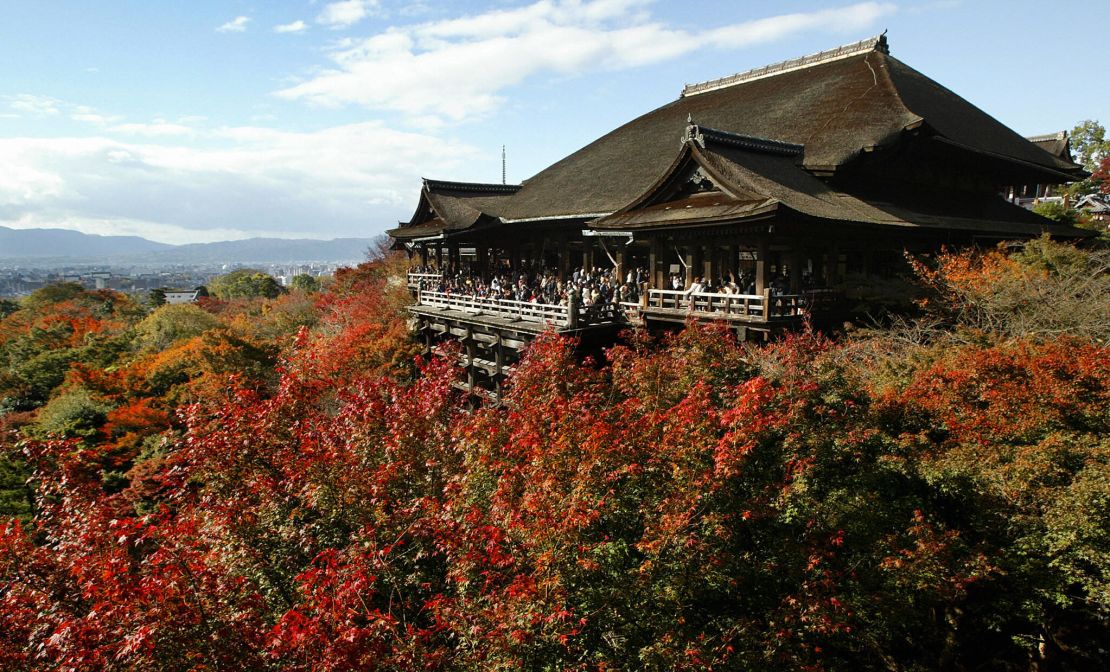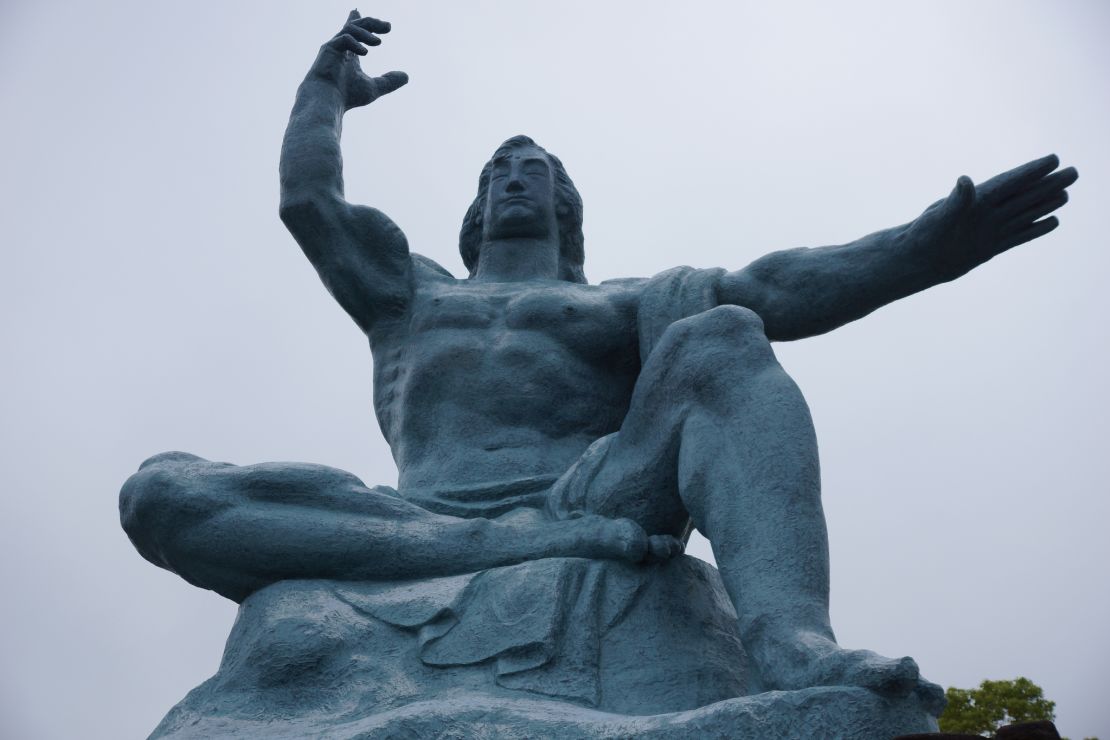Visitors to Japan have so many sights to see and things to do. It’s impossible to fit them all in one trip.
But if you want to see some of the most essential places there, make like a local and head straight for these “pure Japan” spots:
1. Ancient Kyoto

Why: Let’s face it – most travelers can’t resist the magnetic pull of Japan’s former Imperial capital (794-1869), with its temples, shrines and (dwindling) ranks of geisha.
“Of course, many people from Western countries, like the United States and Canada, like to travel to time-honored cities like Kyoto,” says Mamoru Kobori of the Japan National Tourism Organization.
And lest we forget, the ancient city would have been obliterated by an atomic bomb at the end of World War II had it not been for U.S. Secretary of War Henry L. Stimson, who took it off the list of potential targets because he had fond memories of honeymooning there.
Kyoto: World's most photogenic city?
For years, people have visited Kyoto to stay in its old ryokans and eat traditional, multi-course kaiseki meals. But they should also consider exploring the city’s new side.
Entrepreneurs are gutting old teahouses and geisha houses and giving them new lives. Niti, located inside a former geisha house, is a sleek bar and cafe that seamlessly blends contemporary touches with Japanese tradition.
Another fascinating stop is The Sodoh Higashiyama Kyoto, an Italian restaurant and bar created inside the former house and studio of celebrated Japanese painter Seiho Takeuchi.
Getting there: Tokyo and Kyoto Stations are connected by the JR Tokaido Shinkansen, which makes the trip several times a day. The journey takes about 140 minutes.
2. Kumano Kodo pilgrimage

Why: It’s a side of Japan not many tourists see. Monks, retired emperors, aristocrats and regular folk have been hiking this pilgrimage route since the Heian period (794-1192).
The Kumano Kodo, on the UNESCO World Heritage list since 2004, is a network of well-marked (in both Japanese and English) and well-maintained trails winding through the forests and fields, villages and towns that stretch across the southwestern Kii Peninsula in the Kansai region.
“It’s not like Kyoto or Nara – it’s a little off the beaten path,” says Brad Towle of the Tanabe City Kumano Tourism Bureau.
“The routes lead to inspiring natural sacred sites, and along the way visitors can find isolated hot springs, delicious cuisine and authentic accommodations.”
Arriving at the main ancient shrines and temples may be the ultimate goal, but visiting the “Oji” subsidiary shrines or strolling past towering cedar and cypress trees, water-logged rice paddies and neat green-tea plantations is also immensely pleasurable.
You can take a private dip in the cloudy waters of the Tsuboyu bath in Yunomine Onsen. At 1,800 years old, the onsen is believed to be one of the oldest in Japan. Villagers use the water for soaking, cooking and even drinking.
The geological wonder known as the Kawayu Onsen is also worth experiencing. A hot spring bubbles just below the rocky banks of the Oto River. All you have to do is dig a hole, wait for it to fill up and then plunk yourself down. Voila – instant personal onsen.
Getting there: Japan Airlines (JAL) flies between Tokyo’s Haneda Airport and Nanki-Shirahama Airport, which is a bus ride away from Tanabe City.
Travelers can also board a high-speed train from Tokyo to Osaka, and then transfer to a local express line to Kii-Tanabe.
Kumano Kodo: Rewarding hike far off beaten path in Japan
3. Amazing Nagasaki

Why: Almost wiped off the map by the 1945 atomic bombing, Nagasaki has been rebuilt into an urban jewel on Japan’s third largest island, Kyushu.
Nagasaki grew from a tiny fishing village into an important port for trade with Europe and China. When the rest of Japan was practically cut off from the world for many centuries, Nagasaki kept its doors open.
These days, visitors come to learn about the city’s history, wander through its small but thriving Chinatown and marvel at the hillside Glover Gardens, which has a statue of Madame Butterfly to remind people of the Puccini opera that was set here.
Nagasaki also has deep Christian roots, with churches like Oura Catholic Church and monuments to missionaries who were executed in the 16th century and became known as the 26 Martyrs of Japan.
The best photo ops are from atop Mount Inasa, which towers 333 meters above the city. You can hike it or ride up on the Nagasaki Ropeway.
Another popular attraction is Gunkanjima, also known as Battleship Island – used in the Bond movie “Skyfall” and accessed via a 50-minute ferry ride.
“This former coal mining community on an island off the coast of Nagasaki Prefecture was abandoned 40 years ago and left to decay,” says Charles Spreckley of custom travel operator Bespoke Tokyo.
“A few years ago it was opened as an eerily romantic, almost apocalyptic tourist attraction.”
Getting there: Japan Airlines and All Nippon Airlines both fly every day between Tokyo’s Haneda Airport and Nagasaki. The trip takes two hours. Travelers can also ride the high-speed JR Tokaido/Sanyo Shinkansen from Tokyo to Fukuoka’s Hakata Station and transfer to the JR Kamome limited express train to Nagasaki.
Japan travel tips: 11 practical suggestions before you visit
4. Cool Karuizawa

Why: Because it’s one of the most beautiful places to be in Japan in autumn, because it’s several degrees cooler than Tokyo in the summer and because the thrill of being close to one of this country’s most active volcanoes will give your trip that added edge. The 2,568-meter Mount Asama erupted in 1783 and killed an estimated 1,500 people.
Japan's 36 most beautiful places
However, the town’s natural beauty and charm help people to forget about the risks. Emperor Akihito met his future Empress on a tennis court here in 1957. John Lennon and Yoko Ono holidayed in Karuizawa in the 1970s and stayed at the Mampei Hotel.
The town has great hiking, hot springs and bird watching. Yachonomori, or Wild Bird Forest, is home to about 120 species of bird.
Getting there: Karuizawa is a one-hour high-speed train ride from Tokyo Station. Express buses also run from Shinjuku, Ikebukuro and Yokohama.
5. Pick a festival, any festival
Why: Because Japan, with its centuries of Shinto and Buddhist tradition, has no shortage of them. They’re colorful, fun and they take place throughout the year in different parts of the country.
Where else can you see people riding logs down hillsides or sumo wrestlers trying to make babies cry?
Most people who have lived in this country, or who visit regularly, have their favorite. For Duff Trimble, whose Toronto-based Wabi-Sabi Japan customizes guided tours here, it’s the Hakata Gion Yamakasa festival.
“It is likely the most powerful experience I had during my years in Japan – truly epic,” he says.
“I participated in the festival, which might explain my bias, but I believe this would be an amazing experience for anyone. It wraps up so many elements of Japanese culture in one experience.”
Similarly enthusiastic visitors to the July event – which takes place in Hakata, Fukuoka – typically head for the annual street-circuit race of one-ton, 10-meter-tall wheeled floats called yamakasa.
Bonus fact: If you really want to make like a local, avoid eating cucumbers for the duration of the two-week festival.
Apparently, slices of the green stuff look too similar to the emblem of one of the benevolent local gods for mere human consumption.
Getting there: Travelers can take the high-speed JR Tokaido/Sanyo Shinkansen from Tokyo to Fukuoka’s Hakata Station. Japan Airlines and All Nippon Airlines both have daily flights between Tokyo’s Haneda Airport and Fukuoka.
Where to view cherry blossoms in Japan
6. Tokyo’s glorious parks

Why: Because, while most people believe this sprawling metropolis – with its crowded crosswalks and sardine-can trains – is a steel, glass and concrete jungle (or the setting for Ridley Scott’s 1982 film “Blade Runner”), it actually has its fair share of green spaces.
The popular ones include Yoyogi Park, Shinjuku Gyoen and Ueno Park. But the small, yet stunning Happo-en garden in Shirokanedai is just as impressive.
The 50,000-square-meter park is billed as a reflection of “the natural beauty of Edo Japan,” and is worth seeing in any season, especially spring (for the cherry blossoms) and autumn (for the fiery fall colors).
A hut next to a pond, which is fed by a nearby stream, provides the perfect place for quiet contemplation, and to watch fat carp fling themselves into the air. Happo-en also hosts a Japanese teahouse and two restaurants.
Oh, and a chapel – it’s a popular place for weddings. Staff say they can have anywhere from 18 to 35 marriages a day in the busy spring-to-fall season.
So, along with enjoying the garden’s scenery, visitors can watch newlyweds pose for photos in traditional Japanese attire.
Getting there: Take the Yamanote Line to Meguro Station, transfer to the Namboku Line, and get off at Shirokanedai Station. Happo-en is a five-minute walk away.
C. James Dale is a Canadian journalist based in Tokyo.
Editor’s note: This article was previously published in 2012. It was reformatted and republished in 2017.























































